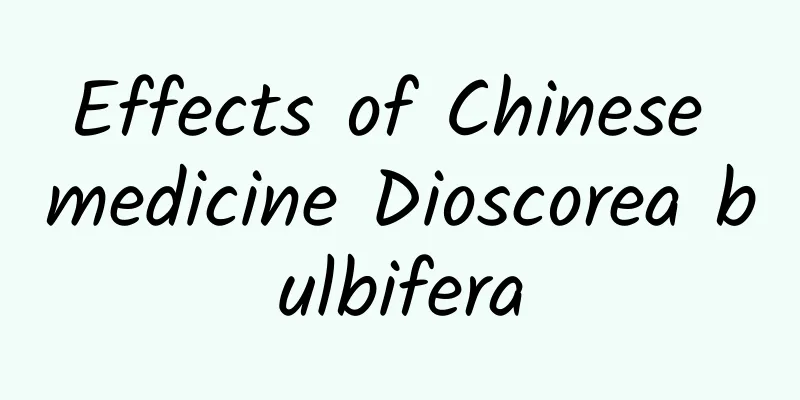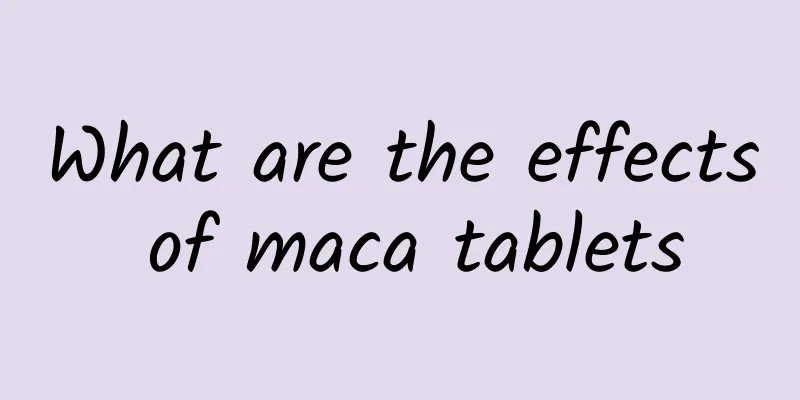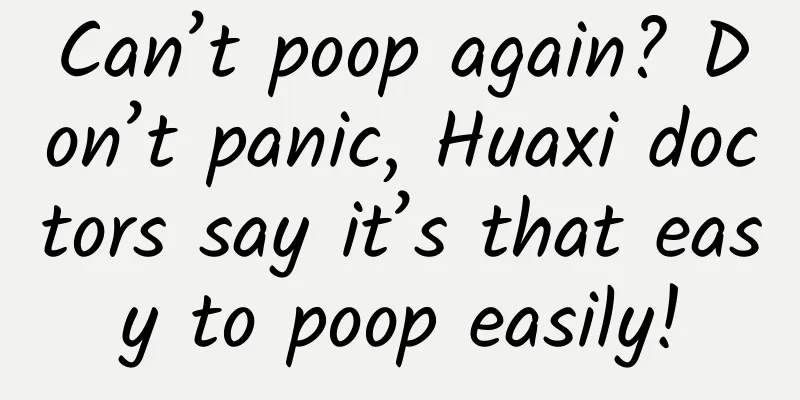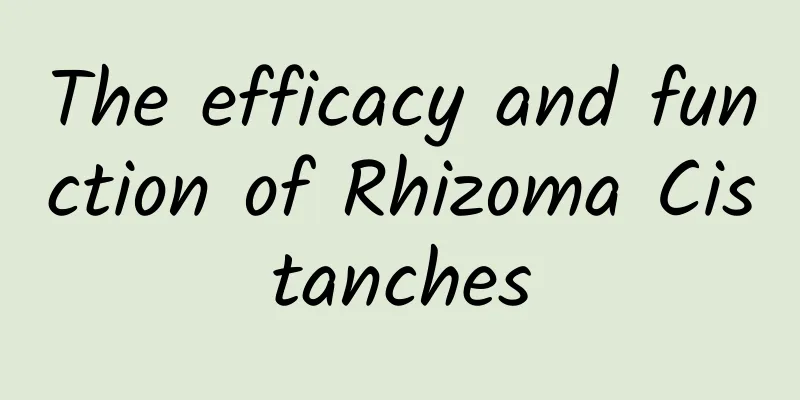Effects of Chinese medicine Dioscorea bulbifera

|
Traditional Chinese medicine is very common. The choice of traditional Chinese medicine cannot be made casually. The use of traditional Chinese medicine should be based on one's own needs. Traditional Chinese medicine for this type of disease is relatively slow, but this treatment method is very helpful for regulating all aspects of the body. Therefore, you can use it with confidence. Many people are not familiar with the traditional Chinese medicine Coptis chinensis. What are the effects of the traditional Chinese medicine Coptis chinensis? The following is a detailed introduction. Chinese medicine Dioscorea bulbifera: 【Effects】: Cools blood, reduces internal heat, eliminates goiter, and detoxifies. [Main indications]: Treat vomiting blood, nosebleed, throat congestion, goiter, sores, carbuncles and scrofula. 【Nature and flavor and meridians】: Bitter, neutral. ① "Rihuazi Materia Medica": "Cool." ② "Kaibao Materia Medica": "Bitter, flat, non-toxic." ③ "Diannan Materia Medica": "Very cold in nature, bitter in taste." "Bencao Jingshu": "Enters the Shaoyin meridians of the hand and the Jueyin meridians of the foot." [Usage and Dosage]: For oral use: decoct in water, 1.5 to 3 qian. For external use: mash and apply or grind into powder and adjust the dosage. [Contraindications]: "Compendium of Materia Medica" states: "It is not suitable to take medicine after carbuncle has ulcerated. If carbuncle does not cause swelling, thirst, pale color, and diarrhea, it is a Yin syndrome, and internal tonification should be the most urgent, followed by detoxification. Medicinal seeds should be taken less and can only be applied externally. [Other names]: Huangyao (Rihuazi Materia Medica), Huangyao root (Kaibao Materia Medica), Muyaozi, Dakui (Compendium of Materia Medica) 【Prescription name】:Dioscorea bulbifera, Radix Codonopsis pilosulae [Trade name]: Dioscorea bulbifera, Coptis chinensis, the best ones are those with large slices, brown-black skin and yellow cross-section. [Medicinal Parts]: The bulbils of this plant (Phellodendron chinense) are also used for medicinal purposes, which is detailed in a separate article. [Distribution of animal and plant resources]: Distributed in Anhui, Jiangsu, Zhejiang, Fujian, Guangdong, Guangxi, Hunan, Hubei, Guizhou, Yunnan, Sichuan, Taiwan and other places. It is cultivated in Hebei, Shandong and other places. [Harvesting and storage of medicinal materials]: They can be harvested from late summer to early winter, and those produced from September to November are the best. Dig out the tubers, remove the stems and leaves, clean the soil, cut into slices about 1 to 1.5 cm thick, and dry them in the sun. After understanding the effects of the traditional Chinese medicine Dioscorea bulbifera, when choosing it, you must understand the above information about it, so that you will know how to use it best. When using traditional Chinese medicine to treat diseases, you must pay attention to your diet and avoid eating spicy foods. Eating spicy foods at this time will hinder the treatment of the disease. |
<<: What is the Chinese medicine Dalizi?
>>: Functions and indications of Chinese medicine Rhizoma Dioscoreae
Recommend
The Earth has been moving at high speed, why are humans unaware of it?
As earthlings, it is easy for us to believe that ...
Have you ever thought of a possibility that your bites are not caused by mosquitoes?
Mosquitoes in the summer are so annoying! They bu...
The efficacy and usage of kidney-tonifying fruit
Many people have heard of natural kidney-tonifyin...
The efficacy and function of pelican beak
The essence of traditional Chinese medicine is to...
Vitamin D is praised again! Research shows that it is a great helper for immunity
This article was reviewed by Pa Li Ze, chief phys...
The efficacy and function of pomelo
We all know that eating fruits regularly has many...
What does "Coriander New Land" smell like? Who decides whether cilantro is fragrant or smelly?
As we are approaching "World Cilantro Hate D...
The efficacy and role of Artemisia argyi[picture]
I wonder if you have ever heard of Artemisia sele...
New quantum charging technology: Fully charging an electric car in as fast as 9 seconds?
With the popularity of electric vehicles, more an...
What are the medicinal values of Gongju
When we watch TV, we often see that Gongju is cho...
Is it possible for humans to travel across the Earth?
Today I want to talk to you about a question that...
The efficacy and function of blood ginseng
Traditional Chinese medicine is a Chinese traditi...
The efficacy and function of Zhejiang goose skin
Many people are not very clear about Zhejiang goo...
The efficacy and function of raccoon meat
We know that there are many kinds of Chinese medi...
Probiotic drinks? They sound healthy, but they may just be sugar water!
Everyone is familiar with probiotics. Advertiseme...









